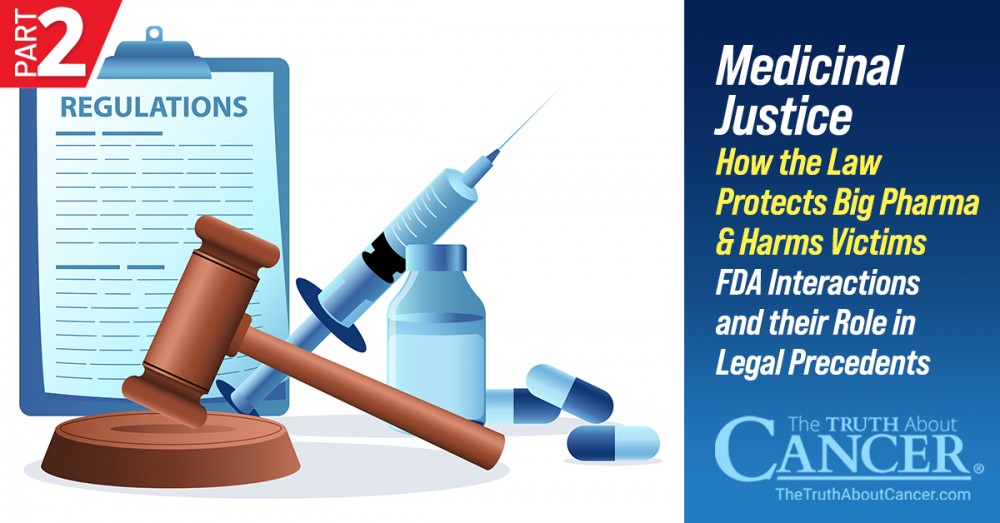Part 2: FDA Interactions and their Role in Legal Precedents
In the first part of our series, we explored the legal framework that protects pharmaceutical companies from lawsuits when their drugs cause adverse side effects. The principles of preemption, court rulings such as Wyeth v. Levine, and the Hatch-Waxman Act all contribute to an environment where it can be difficult for patients to seek legal recourse. As we saw in the case of Singulair, a popular asthma medication, these laws and regulations can even discourage pharmaceutical companies from conducting further safety research on their drugs. This second part continues our examination by delving deeper into the complex relationship between the FDA and the pharmaceutical industry and the implications this relationship has for legal battles involving drug safety.
The FDA’s Role in Regulating Drug Safety and Labeling
The Food and Drug Administration (FDA) plays a critical role in ensuring the safety and efficacy of drugs. However, its capabilities are not absolute. Despite having the authority to mandate new studies on approved drugs, the agency often faces hurdles due to feasibility and cooperation issues from the pharmaceutical industry.
Under the current regulatory framework, the FDA approves drugs based on the balance of their benefits and risks. In most cases, it requires pharmaceutical companies to conduct extensive pre-approval clinical trials. But these trials may not always capture the full range of side effects, especially rare ones or those that manifest over a long period.
Moreover, the FDA relies on pharmaceutical companies to voluntarily update their drug labels when new side effects are discovered. However, the agency can also mandate such changes. But doing so requires a considerable body of evidence showing the new risks, which may not be readily available or may be disputed by the drug manufacturers.
FDA and the Big Pharma: A Complex Corruption
The relationship between the FDA and the pharmaceutical industry is a complex and often contentious one. Both entities share a common goal – ensuring safe and effective drugs are available to the public. But they also have their unique interests and perspectives that can sometimes conflict.
Pharmaceutical companies, for example, aim to bring drugs to market quickly to recover their research and development investments. The process is time-consuming and expensive, with many potential drugs failing before they reach the approval stage. Therefore, they have a vested interest in a streamlined approval process and in maintaining their drugs’ marketability after approval.
On the other hand, the FDA, as a regulatory body, must ensure that drugs are safe and that their benefits outweigh their risks. The agency also has to keep in mind the public health implications of removing a widely used drug from the market due to new side effects discovered post-approval.
This dynamic often comes into play in legal cases involving drug safety. The courts often defer to the FDA’s expertise, a deference that is further reinforced by preemption principles.
FDA & Singulair
In the case of Singulair, the FDA played a crucial role in both the approval and post-market regulation of the drug. The agency convened several advisory panels over the years to discuss concerns about Singulair’s neuropsychiatric side effects.
However, the FDA’s actions were a matter of debate. Despite mounting evidence and numerous reports of suicides linked to Singulair and its generic versions, the agency stopped short of requiring Merck to conduct new studies. Instead, it merely added a black box warning to the drug’s label.
The FDA cited feasibility concerns as the reason for not ordering more research. But critics argue that this decision left patients vulnerable, especially given that the warning could easily be overlooked or misunderstood by patients and even by healthcare professionals.
In the case of Singulair, these challenges were evident. Merck, having lost its patent on Singulair, had little incentive to invest in further research into the drug’s potential side effects. Moreover, the FDA worried that the company might withdraw the drug from the market entirely rather than comply with a mandate for new studies.
The Effects of FDA Decisions on Court Rulings
FDA decisions significantly influence court rulings in lawsuits concerning drug safety. In many cases, the courts defer to the FDA’s expertise and judgments about a drug’s safety. As a result, FDA decisions often form the cornerstone of pharmaceutical companies’ defense strategies.
For instance, in a Wisconsin lawsuit against Merck, the company argued that the plaintiff could not prove that the FDA would have approved a stronger warning before 2012, when the boy was taking brand-name Singulair. A judge agreed, dismissing nearly every claim in the lawsuit. This case underscores how FDA decisions can potentially shield pharmaceutical companies from liability.
Conclusion
The legal and regulatory landscape surrounding drug safety has, in many ways, favored pharmaceutical companies. The interplay of court precedents, laws such as the Hatch-Waxman Act, and regulatory decisions by the FDA provides a protective shield to these companies, even when questions about the safety of their drugs emerge.
The implications are profound for patients who suffer adverse effects from drugs. They face significant hurdles in seeking legal recourse, while pharmaceutical companies can often evade responsibility, especially if the drug in question is a generic version.
Therefore, the onus rests on regulatory bodies and the legal system to reassess the status quo. They need to strike a better balance between protecting pharmaceutical companies’ interests and ensuring patients’ safety. Otherwise, as seen with Singulair, the human cost can be tragically high.



















Leave a Reply